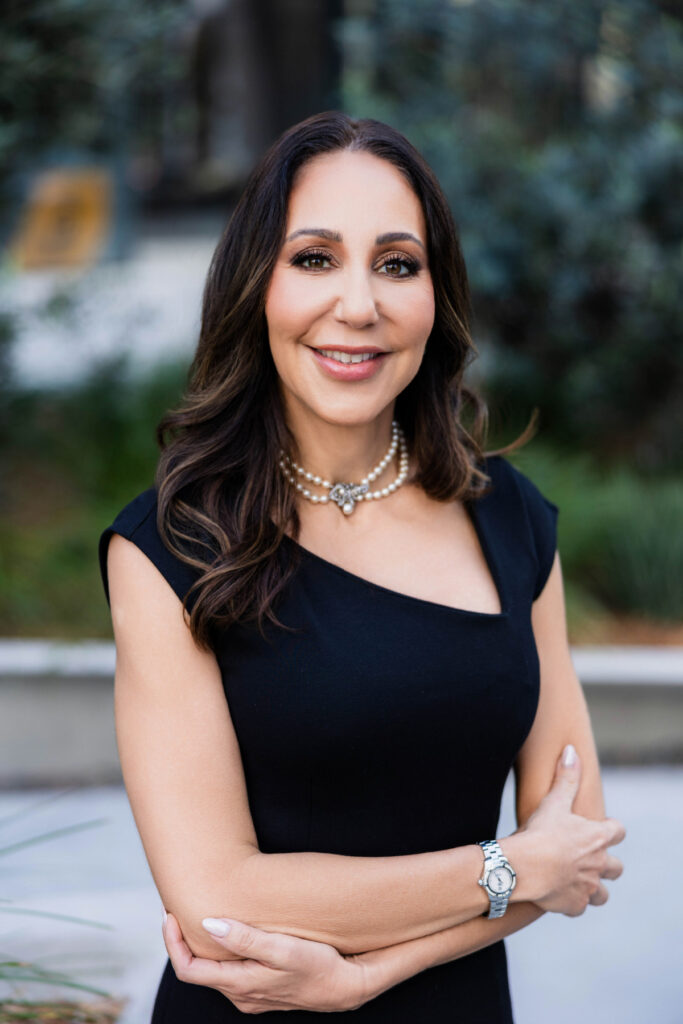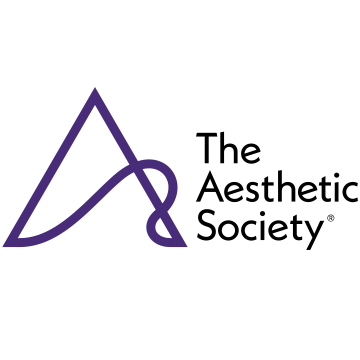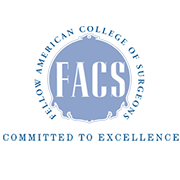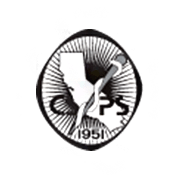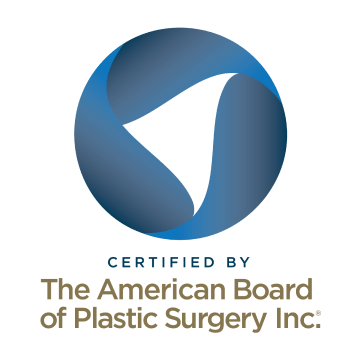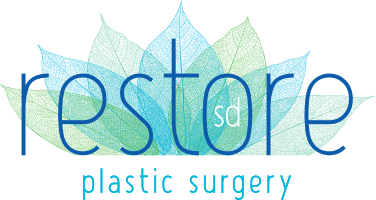Breast Lift (Mastopexy)
Breast lift surgery, or mastopexy, is a popular cosmetic procedure designed to raise and reshape sagging breasts, often resulting from aging, pregnancy, or significant weight loss. Women in San Diego and La Jolla choose this surgery to remove excess skin and breast tissue for a lifted, enhanced breast appearance—without the need for breast implants!
The Best Breast Lift Candidates
- Are not taking blood thinner medications or using nicotine products
- Are not pregnant, breastfeeding or planning to have children in the immediate future
- Have nipples below the lower crease of the breast or pointing downwards
- Have breast ptosis (sagging) but are happy with breast size
- Are healthy and a stable weight
If you are over 40 years old or have a strong family history of breast cancer, Dr. Gallus will recommend a mammogram before surgery.

“I had a tummy tuck & breast reduction/lift to correct asymmetry with Dr. Gallus. Every visit to her office is always so pleasant & comfortable, she truly makes sure her patients are well taken care of. Every single person on her team has always been so kind, too! My skin is genetically prone to keloids and the level of attention & support that has been provided to me to combat my adverse scarring has been nothing short of amazing. I’m so impressed and grateful for the care I’ve received at RestoreSD with Dr. Gallus.
—D. G., actual patient of Dr. Gallus
With over 20 years of experience, Dr. Gallus is a board certified plastic surgeon and Castle Connolly Top Doctor. She will partner with you to develop a tailored surgical plan that prioritizes your safety and results.
Breast Lift La Jolla: Your Options
Breast lift surgery can be performed in several ways. The most common techniques offer a safe and reliable method of lifting the breast that is tailored to your body and your desired results.
Anchor Incision Breast Lift
The most frequent technique employed by Dr. Gallus here at Restore SD is the anchor-type incision. The anchor pattern includes an incision around the areola that extends vertically down and connects to a horizontal incision that is hidden in the lower breast crease. Using the anchor pattern allows for maximal skin removal and powerful reshaping of the breast.
Vertical Breast Lift
Another common technique is the vertical breast lift. This is also sometimes referred to as a short-scar or limited-scar breast lift. This surgery limits the incisions to a “lollipop” type incision. The incision extends around the areola and vertically down to the lower breast crease. It does not include the horizontal lower breast crease incision. This technique is best for women who have minimal skin excess but still require a lifting of the nipple and areola.
Circumareolar Breast Lift
A circumareolar incision is a type of lift that is performed via an incision that is limited to the area around your areola. This limited incision is used when repositioning the nipple areola complex only 1 -2 cm. This is often done in circumstances where symmetry (matching the opposite breast) is desired or in combination with other breast enhancement surgeries. This technique can also be used to reduce the size of large areolae to a size that won’t be revealed in bathing suits or bras.
View breast lift before & after photos »

“I have never felt so much support and love from a plastic surgeon office (I have been to a few.)…I am so happy with my results and will always refer Dr. Gallus and her team to everyone I know. She changed my life and I will be forever grateful!!!”
——A. E., actual patient of Dr. Gallus
Your La Jolla Breast Lift Consultation
When you arrive at Restore SD Plastic Surgery to discuss a Breast Lift (mastopexy), Dr. Gallus will perform a detailed examination as well as review your medical history and any medications you are taking. If you are over 40 years of age or have a strong family history of breast cancer a recent mammogram will be requested. At your consultation, you will have photos taken with our Vectra 3D imaging system and discuss treatment areas and options while viewing your photos series. With our state-of-the-art Canfield software, potential surgical results can be viewed and adjustments can be made, helping you to visualize possible outcomes.
If you have breast ptosis, or sagging breasts, during your consultation Dr. Gallus can tell you which type of breast lift surgery will best correct this.
Video Transcript
Hi, I’m Dr. Kat Gallas of Restore SD Plastic Surgery. Breast ptosis is defined as sagging of the breast. We most commonly think of breast ptosis in three different forms: either the nipple position is at or below the inframammary crease, which is that line underneath or full underneath your breast, or it’s below the inframammary crease, or if the nipple is facing down to the floor, that’s type three ptosis. In certain patients, you can have pseudoptosis, which is when the nipple is in good position, but the breast tissue has fallen down below the nipple. Depending on what level of ptosis you may have, that tends to dictate which type of breast lift you might need. For women who might have significant breast ptosis, a full mastopexy, or breast lift, is indicated. This uses an anchor incision, which is an incision around the nipple areolar complex, straight down, and underneath the breast fold. This provides the most reshaping and lifting in a breast. If you are interested in which breast lift procedure might be the right choice for you, call us at Restore SD Plastic Surgery and schedule a consultation. We look forward to seeing you at Restore SD Plastic Surgery.
The Breast Lift Procedure
Surgery Prep
If you have close friends or relatives who have had breast lifts – start there! A personal story of their journey may guide you to questions to ask your surgeon and having someone with a shared experience is invaluable. Educate yourself by reading our procedure page and viewing our educational videos. Remember to wear a button-down front-opening shirt on the day of surgery so that your post-operative experience does not include wrestling a shirt over your head!
The Surgery
Breast lifts are typically performed under general anesthesia to offer maximum comfort and safety. We perform all surgeries at an accredited outpatient surgery center or hospital. The surgery usually takes 2 – 3 hours depending on your starting breast size and individual surgical plan. Dr. Gallus will carefully mark planned incisions to properly reposition your nipple and areola and review the final plan with you to ensure there are no last-minute questions.
After anesthesia is administered, your surgeon will make incisions and remove the excess breast skin while carefully preserving the blood supply to the nipple and areola. Once the excess skin is removed, the breast tissue is reshaped to a more youthful contour and the nipple-areolar complex is repositioned.
Liposuction may be used to improve the shape of your new breasts or remove extra tissue on the side of your chest. In some cases, a drain is placed. The incisions are then closed using absorbable sutures. There will be no external sutures to remove later. Surgical dressings are applied and you will be placed in a post-surgical compression bra. You will need to wear this bra or a similar front-opening sports bra for the next few weeks.
Depending on your body and surgical goals, Dr. Gallus may recommend the internal bra technique using surgical mesh.
Video Transcript
Hi, I’m Dr. Kat Gallas of Restore SD Plastic Surgery. Today, a lot of my patients who have breast sagging or breast ptosis after weight loss benefit from the use of mesh as part of their breast lift procedure. Mesh is an absorbable suture-type material that forms an internal bra. It dissolves over 1 to 2 years but stimulates your own body’s collagen and elastin to strengthen the lower pole of your breast tissue, helping to support that lifted look. In your consultation, we will determine if adding mesh to your procedure is the right choice for you. We look forward to seeing you at Restore SD Plastic Surgery.
Commonly Combined Procedures with Breast Lifts
Breast lift surgery can be combined with other breast enhancement techniques. It is most often combined with breast augmentation in patients who desire fuller breasts in addition to lifted breasts. Breast lift surgery can also be safely combined with breast implant removal or body contouring procedures such as abdominoplasty (tummy tuck) or liposuction in what is commonly referred to as Mommy Makeover surgery.
- Key Benefits
- Glossary
Key Benefits of Breast Lift Surgery
- Repositions and reshapes sagging breasts
- Elevates drooping nipples and areolas to a more natural position
- Reduces skin irritation and chafing that occurs under sagging breasts
- Corrects asymmetrical breasts, making them more balanced
- Offers significant improvement without the need for implants
- Anchor Incision – A surgical technique used in breast lifts involving three incisions: around the areola, vertically down from the areola to the breast crease, and along the breast crease, resembling the shape of an anchor; this method is typically used for women with significant sagging.
- Areola – The pigmented skin surrounding the nipple; its size and shape can be adjusted during a breast lift procedure.
- Breast Lift (Mastopexy) – A surgical procedure aimed at raising and firming the breasts by removing excess skin and tightening the surrounding tissue, often resulting in an uplifted breast contour.
- Breast Augmentation – Breast augmentation is a plastic surgery procedure that enhances the size and shape of the breasts using implants or fat transfer. Breast augmentation is commonly combined with a lift procedure for improved shape and size.
- Breast Reduction – Breast reduction is a surgical procedure that reduces the size and weight of large breasts by removing excess breast tissue, fat, and skin, aiming to alleviate discomfort and achieve a breast size proportionate to the body.
- Breast Tissue – The biological tissue that makes up the breast, consisting of lobules (milk-producing glands), ducts (milk passages), and fatty and connective tissues.
- Breast Volume – the amount of breast tissue, which can be enhanced with implants to increase breast size.
- Excess Skin – Skin that has lost its elasticity and stretches beyond the natural contour of the breast, often removed during a breast lift to create a firmer breast appearance.
- Lollipop Incision – A breast lift technique that involves two incisions: one around the edge of the areola and another running vertically from the bottom edge of the areola to the breast crease, resembling the shape of a lollipop; it is suitable for moderate sagging.
- Mastectomy – A surgical procedure to remove one or both breasts, partially or completely, often used to treat or prevent breast cancer.
- Nipple-Areola Complex (NAC) – Refers to the nipple and the areola together; in breast lift procedures, the position and size of the NAC can be adjusted to achieve a more youthful appearance.
- Ptosis – Medical term for sagging of the breasts, characterized by the descent of the breast and nipple position below the breast crease; it is commonly classified into different grades based on severity.
- Sutures – Stitches used by surgeons to close incisions; in a breast lift, they are typically placed around the areola, down the breast, and sometimes along the breast crease.
- Symmetry – The goal of achieving a balanced and proportionate appearance between both breasts, which can be addressed during a breast lift procedure.
Recovery
After your surgery is completed you will be able to go home with a responsible adult. Ideally, this loved one or friend will be able to stay with you during the first few days of recovery. Some surgical pain is expected and treated with pain medications. Initially, the area around the nipple and most of the breast skin is numb but sensation returns over the next few months.
Most women can return to work after 1 – 2 weeks after their breast lifts. Normal daily activities like showering, eating, and light activity such as walking can be resumed within 24 hours after surgery. Some post-operative swelling is normal and generally resolves within the first 4-6 weeks after surgery. You should refrain from intense physical activity for 4 weeks.
During the recovery period, you will have follow-ups with your Restore SD surgeon and will be guided back to your usual activities. Most complications occur from getting too active too early, so select a surgical date that allows an appropriate amount of time to heal and gradually return to your more vigorous activities.
Breast Lift Results
Your results should last for a long time unless you gain or lose a significant amount of weight or become pregnant. Over time, your lifted breasts will gradually succumb to the effects of gravity and aging, eventually changing the shape of your breasts.
Scar care after your plastic surgery procedure
Unfortunately, scarless surgery does not yet exist, but Dr. Gallus will educate you about scar management postoperatively. A surgical scar will take 9-12 months to fully mature. Your scar will go through changes during the healing process, and your Restore SD team will help you manage this part of your recovery. This can consist of sun avoidance (no topless beaches for 6-9 months!) scar massage, scar cream, and fractionated laser treatments.
View breast lift before & after photos »
Why trust Restore SD Plastic Surgery for your breast lift
Dr. Gallus has over a decade of experience with cosmetic and reconstructive surgery. In addition to being fully credentialed, she takes the time to listen to your goals and partner with you to develop the best and safest surgical plan that will optimize your results and leave you looking and feeling your best.
Your Safety = Beautiful Results
Breast Lift at Restore SD
At Restore SD Plastic Surgery, patient safety comes first. Board-certified plastic surgeon and former Navy plastic surgeon Dr. Katerina Gallus operates in a private, on-site Quad A-accredited surgery center, with state-of-the-art equipment and LED surgical lighting. She proudly works with a board-certified anesthesiologist and holds privileges at Scripps Memorial Hospital La Jolla.
Breast Lift Videos
A Better Breast Lift with the Internal Bra
Better Safe Than Sorry! The Guide to Getting Ready for Plastic Surgery That You NEED
Before You Book: What to Expect During a Plastic Surgery Consultation
Beware the Brutal Bargains: The Truth About Traveling for Plastic Surgery
Biggest Fears About Anesthesia
Frequently Asked Questions About Breast Lift Surgery

“One of the greatest challenges after significant weight loss is the feeling of being trapped in a wrinkly lump of loose skin. Dr Gallus and her amazing team were so kind and generous in helping me peel away not only my extra skin, but in feeling like it was the right thing for me. She’s taken care of my abdomen, breasts and arms. The scars are very minimal and I feel absolutely amazing. If you’re considering plastics, you can’t go wrong with coming to her.”
—Google Review for Dr. Gallus
Schedule your consultation with Dr. Gallus
Female La Jolla plastic surgeon Dr. Katerina Gallus and our San Diego plastic surgery team are here to make your plastic surgery journey a positive—and even fun—experience! Dr. Gallus partners with you to establish the perfect breast lift surgery plan to achieve your goals. To begin your journey with a consultation at our San Diego office to discuss surgery recommendations, cost, and more, call 858-224-2281 or contact us online today.
Call to schedule your consultation today »
References »
Hidalgo DA, Spector JA. Mastopexy. Plast Reconstr Surg. 2013 Oct;132(4):642e-656e. doi: 10.1097/PRS.0b013e31829fe4b4.
Ramanadham SR, Rose Johnson A. Breast Lift with and without Implant: A Synopsis and Primer for the Plastic Surgeon. Plast Reconstr Surg Glob Open. 2020 Oct 28;8(10):e3057. doi: 10.1097/GOX.0000000000003057. PMID: 33173660; PMCID: PMC7647657.
W. Grant Stevens, David A. Stoker, Mark E. Freeman, Suzanne M. Quardt, Elliot M. Hirsch, Mastopexy Revisited: A Review of 150 Consecutive Cases for Complication and Revision Rates, Aesthetic Surgery Journal, Volume 27, Issue 2, March 2007, Pages 150–154, https://doi.org/10.1016/j.asj.2006.12.014
W. Grant Stevens, Michelle Spring, David A. Stoker, Mark E. Freeman, Robert Cohen, Suzanne M. Quardt, Elliot M. Hirsch, A Review of 100 Consecutive Secondary Augmentation/Mastopexies, Aesthetic Surgery Journal, Volume 27, Issue 5, September 2007, Pages 485–492, https://doi.org/10.1016/j.asj.2007.07.003
Austin RE, Saheb-Al-Zamani M, Lista F, Ahmad J. Periareolar Augmentation-Mastopexy. Aesthetic Surgery Journal. 2019 Aug 22;39(9):953-965. doi: 10.1093/asj/sjz128.
Pferdehirt R, Nahabedian MY. Finesse in Mastopexy and Augmentation Mastopexy. Plastic and Reconstructive Surgery. 2021 Sep 1;148(3):451e-461e. doi: 10.1097/PRS.0000000000008303.
Medically reviewed by Dr. Katerina Gallus — Updated on Dec 12, 2025
Learn more about breast lift surgery in San Diego
 Podcast – A Better Breast Lift with the Internal Bra: San Diego Female Plastic Surgeon Explains
Podcast – A Better Breast Lift with the Internal Bra: San Diego Female Plastic Surgeon Explains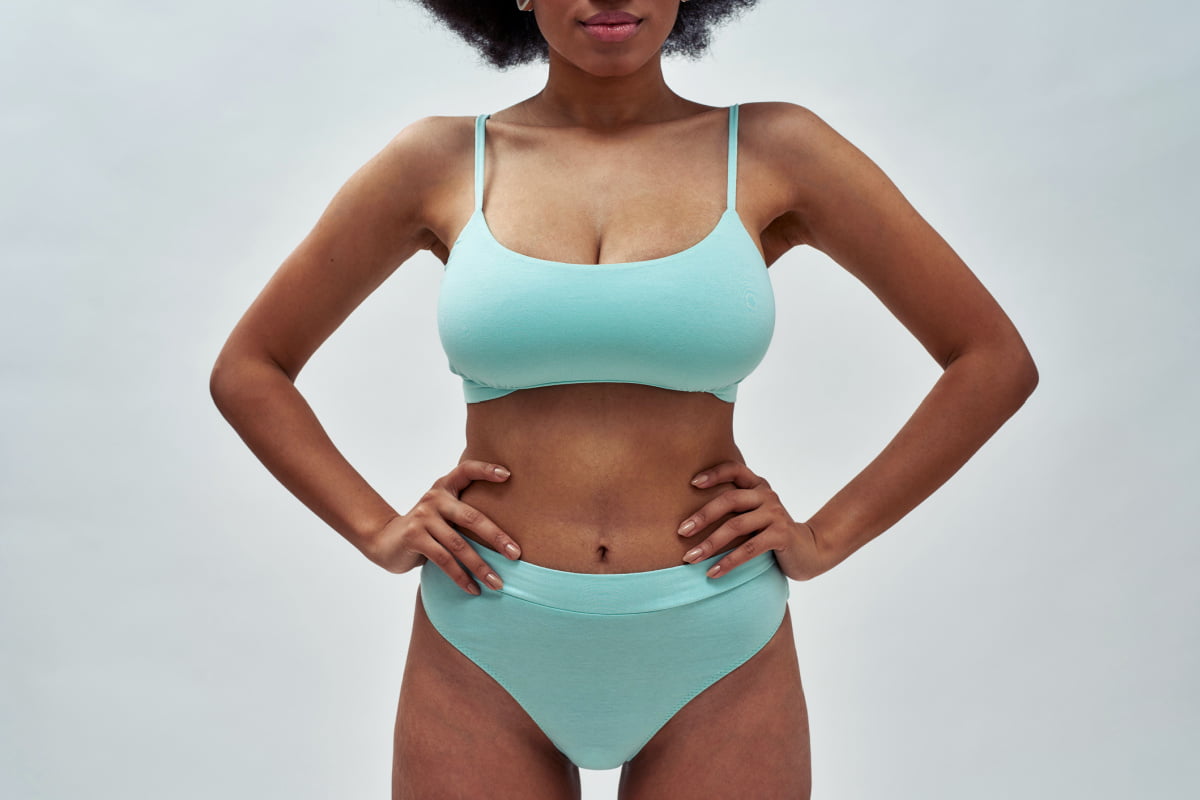 How to Treat Sagging Breasts: Learn the Key Benefits of a Breast Lift
How to Treat Sagging Breasts: Learn the Key Benefits of a Breast Lift Do I Need a Breast Lift with My Augmentation?
Do I Need a Breast Lift with My Augmentation?


